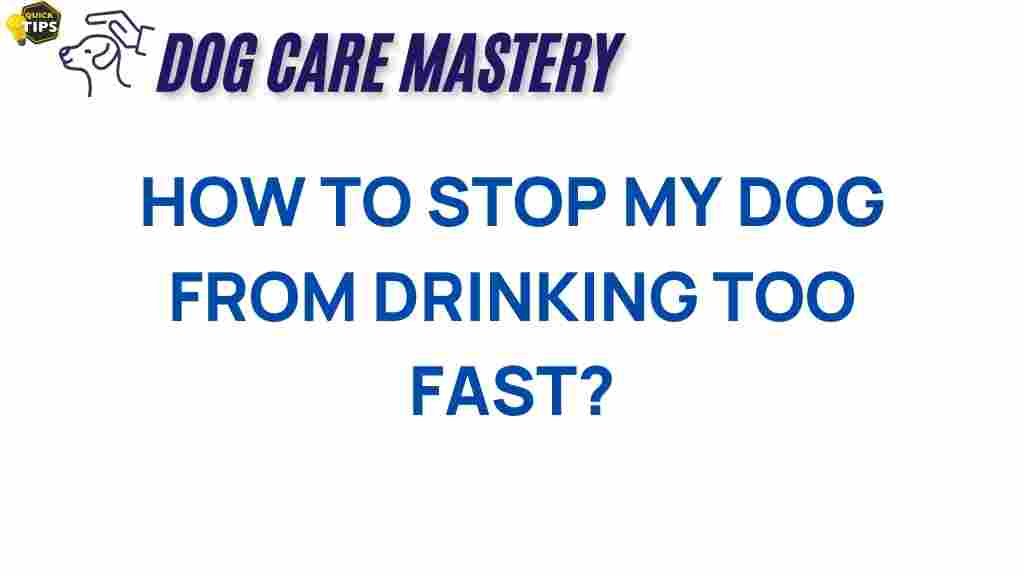Understanding Your Dog’s Drinking Habits
As a responsible pet owner, it’s crucial to pay attention to your dog’s drinking habits. While hydration is essential for your dog’s health, excessive drinking can be a sign of underlying issues. This comprehensive guide will help you understand the reasons behind your dog’s rapid drinking and provide effective strategies to curb this behavior.
Why Do Dogs Drink Quickly?
Dogs may drink rapidly for several reasons, including:
- Thirst: After exercise or playing, dogs may drink quickly to quench their thirst.
- Anxiety: Stressful situations can cause dogs to gulp water as a coping mechanism.
- Health Issues: Conditions like diabetes or kidney disease can lead to increased thirst and rapid drinking.
- Competition: If multiple pets share the same water bowl, your dog may drink quickly to avoid losing access.
Identifying the underlying cause of your dog’s drinking habits is crucial for addressing the behavior effectively.
Step-by-Step Process to Curb Rapid Drinking
Now that you understand the reasons behind your dog’s rapid drinking, let’s explore how to manage this behavior effectively.
1. Monitor Water Intake
Keep track of how much water your dog consumes daily. This will help you identify any changes in drinking habits. Use a measuring cup to determine the exact amount of water your dog drinks each day.
2. Choose the Right Water Bowl
The type of water bowl can affect your dog’s drinking habits. Consider the following:
- Size: A shallow bowl allows your dog to drink comfortably without gulping.
- Material: Stainless steel bowls are easy to clean and less likely to tip over than plastic ones.
- Non-Slip Base: A bowl with a non-slip base can prevent spills and encourage slower drinking.
3. Use a Slow-Feeding Bowl
Slow-feeding bowls are designed with obstacles that make it more challenging for your dog to drink quickly. These bowls are available in various styles, ensuring that your dog can access water without gulping.
4. Create a Calm Drinking Environment
Reduce stress during drinking time by creating a calm environment. Consider the following:
- Limit distractions by moving the water bowl to a quiet area.
- Provide your dog with a comfortable space where it feels safe.
5. Establish a Routine
Dogs thrive on routine. Set specific times for your dog to drink water, especially after meals and playtime. This will help regulate their drinking habits and reduce the tendency to gulp water.
6. Consider the Water Temperature
Some dogs prefer cool water, while others may like it at room temperature. Experiment with the water temperature to see what your dog prefers, as they might drink more slowly if they enjoy the water more.
Troubleshooting Common Issues
If your dog continues to drink rapidly despite implementing these strategies, consider the following troubleshooting tips:
1. Assess Health Concerns
Consult your veterinarian if you notice any sudden changes in your dog’s drinking habits. Rapid drinking can be a symptom of various health issues, including:
- Diabetes Mellitus
- Kidney Disease
- Cushing’s Disease
- Urinary Tract Infections
Early detection can lead to more effective treatment options.
2. Evaluate Anxiety Levels
If you suspect anxiety is causing your dog to drink quickly, consider implementing relaxation techniques.
- Calm Environment: Use calming music or white noise to soothe your dog.
- Training: Positive reinforcement training can help reduce anxiety.
- Consult a Professional: A dog trainer or behaviorist can provide tailored strategies to manage anxiety.
3. Limit Access to Water
While hydration is essential, limiting access to water during certain times may help control rapid drinking. Ensure your dog has access to fresh water at regular intervals without leaving it out all day.
Conclusion
Understanding your dog’s drinking habits is essential for their overall health and well-being. By monitoring their water intake, creating a calm drinking environment, and using the right tools, you can effectively curb rapid drinking behavior. Always consult your veterinarian if you notice any concerning changes in your dog’s drinking habits, as this may indicate underlying health issues.
If you want to learn more about pet care, check out our other articles on dog nutrition and behavior management.
By taking proactive steps, you can ensure that your dog remains healthy, happy, and well-hydrated!
This article is in the category Behavior and created by dogcaremastery Team
